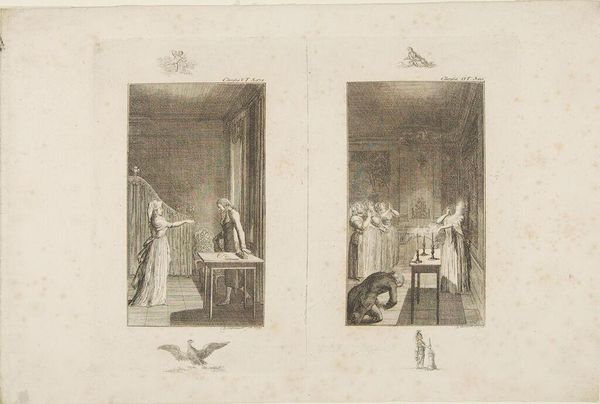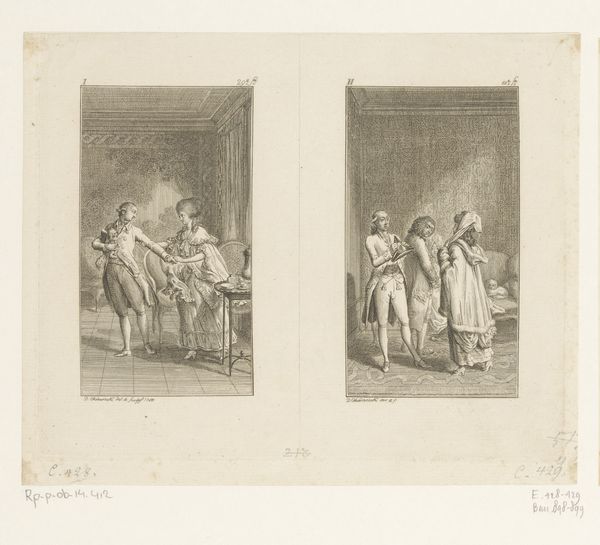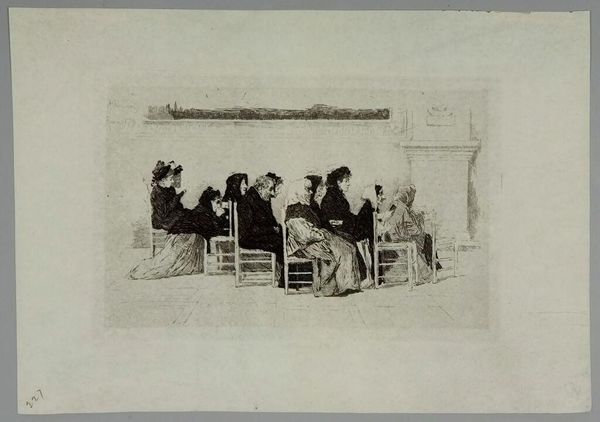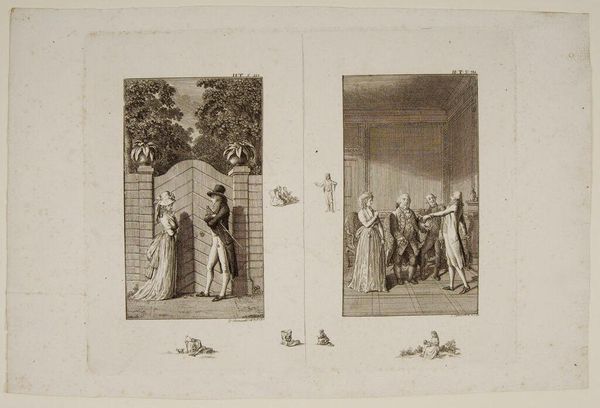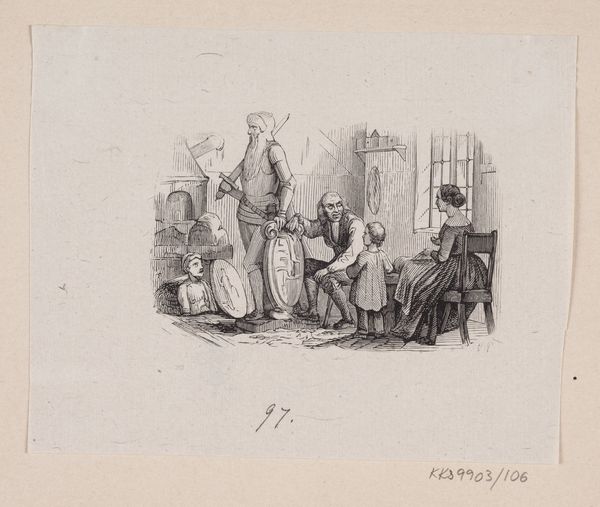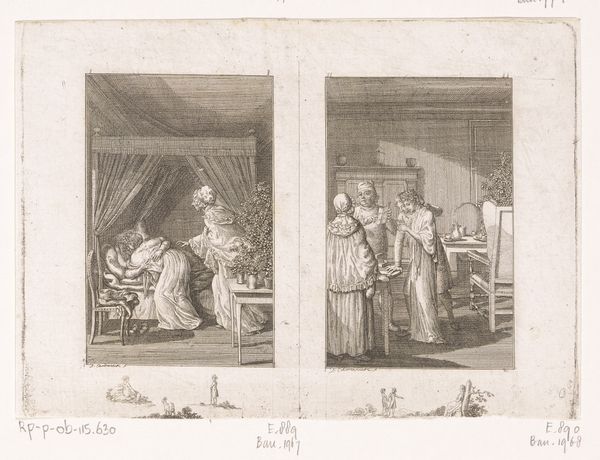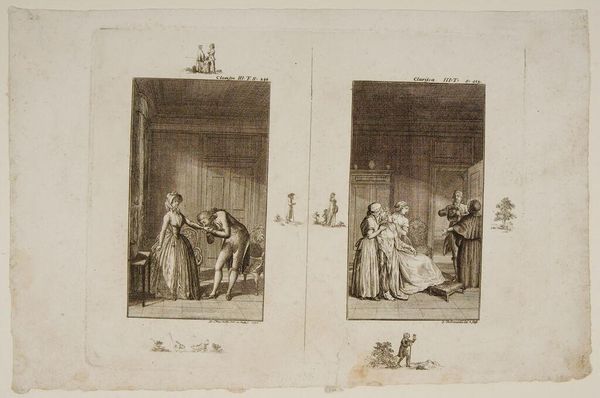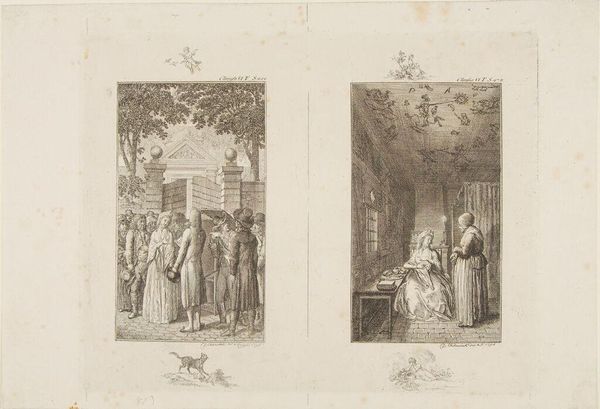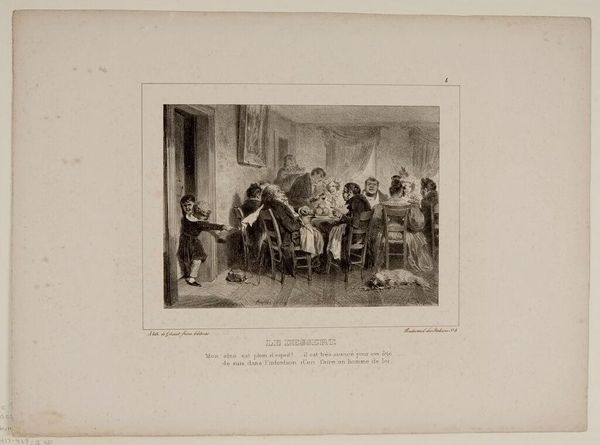
Dimensions: Image (Left): 12 Ã 6.7 cm (4 3/4 Ã 2 5/8 in.) Image (Right): 12 Ã 6.7 cm (4 3/4 Ã 2 5/8 in.) Plate: 17 Ã 21.5 cm (6 11/16 Ã 8 7/16 in.) Sheet: 19.5 Ã 29.5 cm (7 11/16 Ã 11 5/8 in.)
Copyright: CC0 1.0
Curator: This is Daniel Nikolaus Chodowiecki's "Two Scenes from 'Clarissa'," housed here at the Harvard Art Museums. It's presented as two contrasting images on a single sheet. Editor: It's so somber. Even in the first panel, filled with people, there's a palpable sense of constraint and muted emotion. The rendering seems deliberately stark. Curator: Indeed. Chodowiecki, active in the late 18th century, often explored morality through visual narratives. The scenes depict crucial moments from Samuel Richardson's novel. On the left, we see Clarissa surrounded by her family, symbolizing societal pressures. The right panel shows her in isolation and distress. Editor: So, the intaglio printmaking technique -- that web of etched lines -- becomes a sort of visual cage, reflecting Clarissa's entrapment. What materials were employed to make this? Curator: Likely etching on a copper plate, allowing for detailed linear work and tonal variations. The print's dissemination meant these moral narratives could reach a wide audience. The second panel shows the finality of Clarissa’s rejection by society. Editor: The physical object, the print itself, becomes a vehicle for spreading ideas about virtue, class, and the power of social structures. It does make you wonder about the economics of art dissemination during the period. Curator: Exactly. It's an intimate portrayal of societal expectations crushing an individual. Editor: A sobering reminder of the physical weight of those expectations, brought to life through the artist’s choice of material and line.
Comments
No comments
Be the first to comment and join the conversation on the ultimate creative platform.

